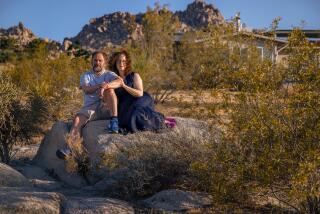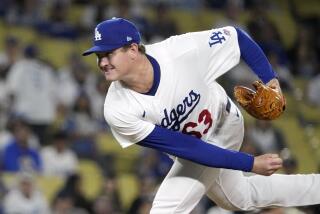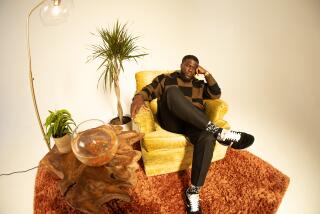Harry Hurt dies at 81; motorcycle accident expert

- Share via
Harry Hurt, one of the world’s foremost authorities on motorcycle crashes and their causes, has died. He was 81.
Hurt suffered a heart attack Sunday at Pomona Valley Hospital. It was a complication of back surgery that he had a week earlier, said his eldest son, Harry Hurt III.
Hurt was the principal investigator of the Hurt Report, an in-depth, on-scene investigation of 900 motorcycle accidents in Los Angeles from 1976 to 1977.
Published in 1981, his groundbreaking research continues to form the basis of many of the country’s motorcycle safety programs and is credited with saving countless lives.
Hurt was a professor of safety science at USC’s Traffic Safety Center in the early 1970s, when roughly 10% of U.S. highway traffic fatalities were because of motorcycle accidents.
In 1975, the National Highway Traffic Safety Administration reached out to Hurt and the university to develop an accident investigation methodology and study that would determine the causes of motorcycle crashes and injuries.
Among the study’s major findings were that speed was not a factor in most crashes; that helmets were very effective in preventing brain injuries and deaths; and that two-thirds of motorcycle crashes involved cars and two-thirds of those accidents occurred when a car driver failed to see the motorcycle and violated the cyclist’s right of way.
“Harry was the acknowledged giant in motorcycle accident research,” said Jim Ouellet, one of the accident investigators for the Motorcycle Accident Cause Factors and Identification of Countermeasures study, better known as the Hurt Report.
“Similar studies since 1990 reflect his influence and have largely confirmed his findings. He was a bulldog at finding the facts and making them public even if some people were unhappy when the facts he reported didn’t support their pet theories.”
Hurt was a lifelong motorcyclist and never had a crash, said his wife, Joan.
He rode “a garage full of things: Hondas, Triumphs, Nortons, dirt bikes, street bikes -- all kinds of stuff,” his son said, including a Suzuki trail bike he used to walk his pet, “Gurl Dawg,” as recently as a decade ago, when he gave up motorcycles because he was no longer physically able to ride.
The only child of a banker, Hugh Harrison (Harry) Hurt Jr. was born Dec. 13, 1927, in Big Spring, Texas, where he grew up building and flying model airplanes.
Hurt joined the Navy toward the end of World War II, learned to fly and became a commissioned officer, but the war was over, so he never flew in combat.
He met his wife, Joan Beene, while serving in the Navy. They were married in 1950, the same year he graduated from the Agriculture and Mechanical College of Texas (now Texas A&M University), where he earned his bachelor’s degree in aeronautical engineering.
After a short stint analyzing airplane designs for the Texas aero physics lab North American Aviation, he moved west to attend USC and earned his master’s degree in aeronautical engineering.
As a graduate student, Hurt was involved with a project to develop a crash helmet that forms the basis for helmets used today: a hard exterior shell lined with an energy-absorbing material and soft inner padding.
Hurt’s expertise in vehicular safety began with aviation. He wrote “Aerodynamics for Naval Aviators,” a flight-training textbook that continues to be standard reading for aviators and is still in print, 44 years after its initial publication.
It was after joining the USC faculty and heading the engineering section of its safety division that Hurt branched into motor vehicle safety research, developing and teaching courses in accident investigation/analysis and accident reconstruction.
Although he is best known for the Hurt Report, his more recent work included a large-scale motorcycle accident causation study in Thailand. Hurt supervised it through his Head Protection Research Laboratory in Paramount, a nonprofit organization he established to evaluate helmets and other forms of head protection equipment after he retired from USC as a professor emeritus.
“I don’t think [Hurt’s] contributions to motorcycle safety can be overstated,” said Art Friedman, former editor of Motorcyclist magazine, who in 1990 wrote a column naming Hurt as “Motorcyclist of the Decade.”
“Our readers, not surprisingly, had chosen multiple-time World and National Champion Kenny Roberts, but my choice was Harry,” Friedman said. “After all, Roberts had thrilled us, but Harry Hurt had helped save many of our lives and limbs and continues to do so.”
In addition to his wife and son Harry, Hurt also survived by another son, John; three daughters, Julie, Vivien and Vera; and 10 grandchildren.
A remembrance will be held at the Paramount lab in January.
susan.carpenter
@latimes.com
More to Read
Start your day right
Sign up for Essential California for the L.A. Times biggest news, features and recommendations in your inbox six days a week.
You may occasionally receive promotional content from the Los Angeles Times.






